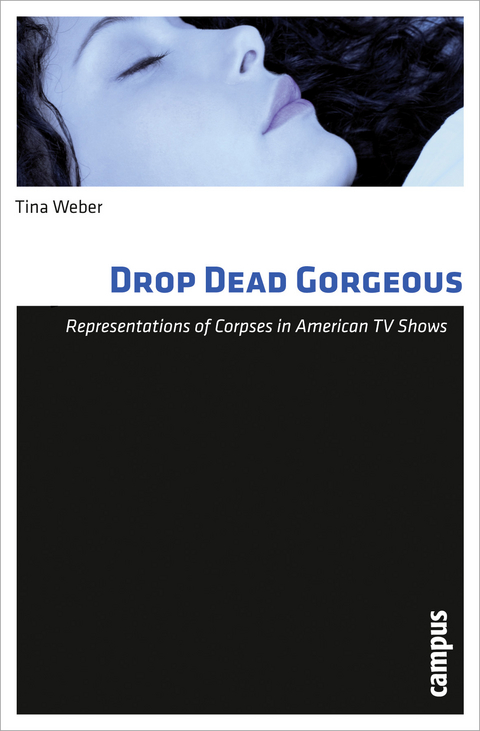Drop Dead Gorgeous
In amerikanischen Fernsehserien wie »CSI« oder »Six Feet Under« sind Tote nicht mehr nur Ausgangspunkt für Ermittlungen - der Tote selbst wird zum Untersuchungsobjekt, Fokussierungen auf tote Körper, etwa bei rechtsmedizinischen Untersuchungen, bestimmen die Szenerie. Tina Weber setzt sich mit diesen neuen filmischen Inszenierungsformen auseinander und fragt, welche gesellschaftlichen Symptomatiken im Umgang mit dem Tod sich darin zeigen.
Tina Weber, Dr. phil., ist wissenschaftliche Mitarbeiterin am Institut für Soziologie der Technischen Universität Berlin.
Content
Part 1-Introduction
Prefacexi
Acknowledgmentsxii
Introductionxv
1 Theory 20
1.1. Image, death and discourse20
1.2. Historical survey of depictions of corpses 28
1.3. Representation of corpses in TV shows from 1950-200035
1.4. New representations of corpses in TV shows from 2000-201039
1.5. New sophisticated death representations44
2 Methodology 50
2.1. Analysis of TV shows52
2.2. Pictorial Analysis53
2.3. Film Analysis61
2.4. Interviews64
2.5. Statistic research65
2.6. "Genre"66
Part 2-Analysis: What is shown and how?
3 Pictorial Analysis: Pretty corpses in the pathology73
3.1. Introduction73
3.2. New TV shows with new representations of death75
3.2.1. Documentary: North Mission Road and Family Plots76
3.2.2. Black comedy and drama: Six Feet Under 81
3.2.3. Crime: CSI, Crossing Jordan, Bones, NCIS, and Castle87
3.2.4. Fantasy comedy: Dead like me and Pushing Daisies99
3.2.5. Fantasy drama: Tru Calling, Heroes, and Dexter102
3.3. Summary 110
4 Film Analysis: Disgusting autopsies in the pathology 113
4.1. Media Aesthetics115
4.2. Film Analysis Autopsy 119
4.3. Film Analysis CSI 128
4.4. Comparison and Evaluation of the Representation Codes134
4.5. Summary138
Part 3-Field Research: What is not shown and why?
5 New representations and new taboos143
5.1. Taboo and death144
5.2. General representation restrictions150
5.3. Specific representation taboos regarding death160
5.4. Excursus on hospital autopsies168
5.5. Conclusion on new representations and new taboos171
6 Field research: The Representation of Corpses under Constraints 173
6.1. Officials: The LA County Coroner TV show North Mission Road174
6.1.1. Pictorial analysis of the representation of an autopsy175
6.1.2. Interview with the medical examiner participant179
6.2. Producer: Interviews with the filmmaker184
6.2.1. Money, time and censorship187
6.2.2. Race, Age, Gender 202
6.2.3. Working on realism 204
6.3. Recipients: The public response to the new TV shows210
6.3.1. The "CSI Effect" in the juristic discourse210
6.3.2. The "CSI Effect" in the humanistic discourse212
6.4. Summary222
Part 4-Conclusion
7 Conclusion225
7.1. Visual knowledge and communicative genre229
7.1.1. Changing genres231
7.1.2. Changing body images234
7.2. New Representations of Death in other Audio-Visual Media243
Works cited247
Index263
Introduction
I am a social scientist writing about the representation of corpses in new TV shows of the 21st century. This work is divided into four sections: firstly Theory and Methods, secondly Pictorial and Film Analysis (subtitled: What is shown and how?), thirdly Statistical Research and Interviews (subtitled: What is not shown and why?) and fourthly the Conclusion.
In 2005, a colleague and I in cooperation with Humboldt University Berlin and the funeral parlour company Ahorn Grieneisen AG, organised a conference on the topic "The New Visibility of Death". Papers were given about the developments taking place in economics, art and the media. In 2006, Thomas Macho argued that death, once invisible, has become recently more visible, referring amongst other things to numerous TV shows. Hans Belting, however, argues against a new visibility of death, pointing instead towards an accomplishment of the invisibility of death. He argues that these images do not represent the dead but hide them with substitutes, since there is no real reference point and no dead person being represented, a replacement of death is instead put forth. Belting, explains that humans have produced media masks of those things that they refuse to see since time immemorial. We hide those things that are unwanted and replace them with something more desirable but we are nonetheless aware that this representation of death is fake. Elizabeth Hallam et al., argues in quite the same fashion about sophisticated systems concerning the representation of death with functions that mask its reality. In my work, I aim to analyse the systems of representation in contemporary TV shows and question the validity of the arguments of Thomas Macho and Hans Belting concerning "The New Visibility of Death". I want to combine both approaches of the "New Visibility of Death" and the new sophisticated representation systems of death. My hypothesis is this: when a distinctive large number of new and consistent images of corpses appear in new TV shows, one can then deduce codes of representation, which constitute a new system of corpse presentation. The codes of representation define a rigid field of visibility. My research is therefore concerned with analysing the visibility of certain codes of contemporary representation of corpses in a certain place (daily TV shows), dissociated from paintings and photographs of the dead in past centuries. The analysis of corpse representation in 21st century media will shed light on the contemporary media's ideals of beauty and the conveyed body knowledge about the dead body.
Section 1: Theory and Methodology
In the first chapter, I will introduce the theoretical background for the following chapters. I will start with the exploration of (1) the connection between image and death. When writing about death and the representation of death, one has to refer to Maurice Blanchot, Hans Belting and Thomas Macho. Not only because they claim that the dead were the first pictures created by prehistoric man, but also because they state that the experience of death and loss made way for these images. These images changed as the shapes of the bodies of the living changed. Thus the bodies of the living, altered and manipulated by social conventions are the bodies then altered again in death. They change shape over time. The body has become more prominent in sociology due to the attention it has gained in society. Norbert Elias, Michel Foucault and their followers stressed the important role of the body and its transformation from a historic perspective.
I will exemplify the connection of death and images by presenting (2) a historical survey of depictions of corpses. I will highlight the research on the history of changing attitudes toward death and the depiction of death in different centuries. Moreover, I will point to new forms of representation in art, such as death photography or installations and then continue by examining how death is portraye
| Erscheint lt. Verlag | 4.10.2011 |
|---|---|
| Reihe/Serie | Todesbilder. Studien zum gesellschaftlichen Umgang mit dem Tod ; 6 |
| Zusatzinfo | zahlr. Farbabbildungen |
| Verlagsort | Frankfurt |
| Sprache | englisch |
| Maße | 140 x 213 mm |
| Gewicht | 347 g |
| Themenwelt | Sozialwissenschaften ► Kommunikation / Medien ► Kommunikationswissenschaft |
| Sozialwissenschaften ► Kommunikation / Medien ► Medienwissenschaft | |
| Schlagworte | American TV Shows • Amerikanische Serien • Corpses • CSI • Death • Fernsehserie • Fernsehserien • Leichen • Pathologie • Rechtsmedizin • Representations of Death • Six Feed Under • Six Feet Under • Thanatosoziologie • Tod • USA; Kultur |
| ISBN-10 | 3-593-39507-X / 359339507X |
| ISBN-13 | 978-3-593-39507-4 / 9783593395074 |
| Zustand | Neuware |
| Haben Sie eine Frage zum Produkt? |
aus dem Bereich




